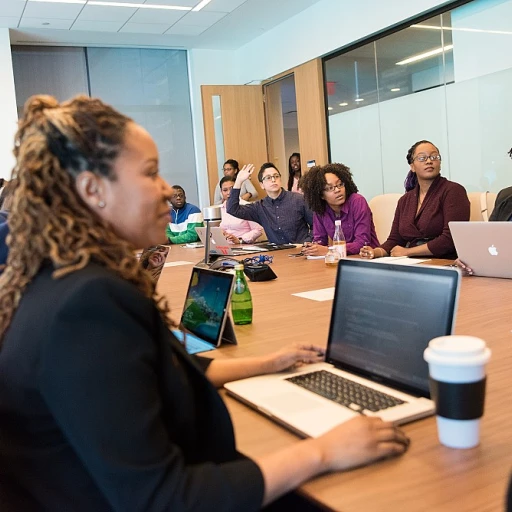The Basics of Disparate Impact in HR
Defining Disparate Impact in HR Practices
Disparate impact is a pivotal concept in human resources concerning how employment practices inadvertently affect certain groups more than others. Originating from civil rights law, this principle serves to protect individuals from unfair treatment in various HR policies and procedures. It’s crucial to underscore the difference between disparate impact and disparate treatment—while the latter involves intentional discrimination against a protected class, disparate impact revolves around seemingly neutral practices that, in effect, disadvantage certain groups based on race, color, national origin, religion, sex, and other protected classes. In the United States, the concept gained prominence with the landmark case under Title VII of the Civil Rights Act, which set the foundation for addressing discriminatory employment practices. Employers are obligated to ensure that their policies, whether written or de facto, do not inadvertently cause a disparate impact on employees or potential hires. This commitment to fairness extends beyond hiring, encompassing other aspects like promotions and layoffs.The Role of Policy and Legislation
The role of policy and legislation in counteracting disparate impact cannot be overstated. Agencies such as the Equal Employment Opportunity Commission (EEOC) enforce laws that discourage such discriminatory practices. Indeed, state and local law mechanisms often operate alongside federal regulations to provide a more robust framework for protecting employee rights. The housing sector faced similar scrutiny under the Fair Housing Act, culminating in significant rulings from the Supreme Court that shaped the understanding of fair housing practices. While court rulings and civil rights laws provide the basis for regulating discriminatory employment practices, it's imperative for firms to proactively address these issues within their operations. An emphasis on inclusive communities in order to foster a diverse workforce is now a best practice encouraged by legal standards. For those aiming to delve deeper into how these concepts apply within the workplace, the exploration of choosing work benefits with AI invites a new perspective on how artificial intelligence can aid in ensuring equitable employment practices. Learn more about this emerging trend and consider how integrating digital innovation with traditional HR policies could potentially mitigate disparate impacts, further aligning practice with policy.AI's Role in HR and Potential Risks
Examining the Intersection: AI's Role in HR
Artificial intelligence is quickly becoming a critical component of human resources management, with its ability to analyze data at unprecedented speeds. However, with this comes a set of potential risks that need careful consideration, particularly the risk of disparate impact. By understanding these risks, HR professionals can better navigate the delicate balance of integration while ensuring fair practices.
AI's Transformational Power in Human Resources
The use of AI within HR streamlines employment practices such as recruitment, talent management, and performance evaluations. Leveraging advanced algorithms, agencies can enhance decision-making processes and operational efficiency. Yet, despite its advantages, AI can unintentionally perpetuate existing biases if not properly monitored. The national discourse on AI showcases instances where discrimination on the bases of race, gender, or national origin occurred, highlighting the need for vigilant oversight.
Recognizing Potential Inherent Biases
Bias in AI systems often stems from the data used to train these systems, reflecting societal inequities and systemic biases. This can lead to unintentional yet discriminatory outcomes, impacting protected classes and potentially violating civil rights laws. Ensuring choice and fairness, AI-driven systems must adhere to laws and principles like Title VII of the Civil Rights Act, which prohibits employment discrimination based on color, religion, or sex.
Risk Management and Fairness Assurance
To mitigate these risks, enterprises should incorporate comprehensive risk assessment methods, such as the "7 Tests of Just Cause." These steps provide a structured framework to evaluate and ensure the fair deployment of AI within HR, thereby protecting inclusive communities and fostering a fair housing work practice.
Case Studies: Disparate Impact in AI-driven HR Systems
Examining Real-World Cases of Disparate Impact in AI-enabled HR Systems
The advent of AI in HR has not been without its controversies, particularly when it comes to the unintended consequences of discrimination. The principles of disparate impact—a concept evolved from U.S. employment law—are central to understanding this. AI systems in HR are now scrutinized under the same lens to ensure that they do not unfairly target individuals based on race, color, religion, or other protected classes. Key cases have highlighted both the progress and pitfalls inherent in utilizing AI.- One notable example involves a leading tech firm that implemented an AI recruitment system, which inadvertently favored certain demographics over others, leading to a civil rights investigation. Here, the impact claims made by affected parties brought attention to systemic biases within algorithmic employment practices.
- In another case, a state's labor agency reviewed an AI tool used for evaluating employee performance. The tool was found to disproportionately impact individuals based on their national origin and sex, prompting legal scrutiny to ensure fair employment practices.
- The supreme court has also weighed in on cases where companies used AI-driven assessments that led to indirect discrimination. These cases underscore the potential for AI to inadvertently reinforce existing disparities within the labor market.
Legal Implications and Compliance
Legal Considerations in AI-driven HR: Compliance and Protections
Navigating the legal landscape of AI-driven human resources systems is crucial for organizations looking to implement these technologies. With the growing use of artificial intelligence in hiring and employment practices, it is imperative to understand the potential for disparate impact and the legal implications that accompany it. Employers must be vigilant about compliance with existing labor laws to prevent discriminatory practices. Title VII of the Civil Rights Act of 1964 serves as a foundational legal standard in the United States, prohibiting employment discrimination based on race, color, religion, sex, and national origin. The principle of disparate impact under Title VII helps to ensure that policies and practices, even if neutrally applied, do not have an adverse effect on members of a protected class. Given the complexity of AI systems, organizations must actively engage in thorough impact assessments to identify potential biases. In recent years, the Supreme Court and various state and local legal agencies have taken a closer look at AI systems' capacity to inadvertently perpetuate existing discriminatory trends. Several notable court cases and claims have drawn attention to the role of AI in fair housing and employment practices, emphasizing the necessity for businesses to remain informed and proactive in their compliance efforts. To align with legal standards, companies should consider:- Conducting regular audits of AI systems to detect and rectify biased outcomes.
- Collaborating with legal counsel to ensure policies are consistent with national and state regulations.
- Keeping abreast of news and developments regarding AI in HR from reputable sources and firms specializing in labor law.
Strategies for Mitigating Disparate Impact
Implementing Fair and Inclusive AI Practices
To mitigate disparate impact in AI-driven HR systems, organizations must focus on implementing fair and inclusive practices. This involves a thorough evaluation of AI tools to ensure they align with civil rights and employment laws, such as Title VII of the Civil Rights Act. By doing so, companies can avoid discriminatory outcomes that may affect protected classes based on race, color, religion, sex, or national origin.
Regular Audits and Monitoring
Regular audits are crucial in identifying and addressing potential disparate impact issues. These audits should assess AI systems for any bias in employment practices. Monitoring should be continuous, allowing for adjustments in policy and practice to ensure compliance with state and national law. This proactive approach can help prevent impact claims and safeguard against potential court cases.
Training and Awareness
Training HR professionals on the implications of AI in hiring and other HR functions is essential. Awareness programs should highlight the importance of fair housing principles and inclusive communities. This knowledge helps in crafting policies that minimize disparate outcomes and promote fair employment practices.
Collaboration with Legal Experts
Engaging with legal experts, including those familiar with supreme court rulings and state local regulations, can provide valuable insights into maintaining compliance. This collaboration ensures that AI systems adhere to civil rights standards and that any potential discrimination is addressed promptly.
Developing Transparent AI Systems
Transparency in AI systems is key to building trust and ensuring fairness. Clear documentation of how AI systems make decisions can help in identifying and correcting any discriminatory practice. Organizations should strive for transparency to uphold fair housing and employment standards, thereby supporting inclusive communities.
The Future of AI in HR: Balancing Innovation and Fairness
Embracing Innovation with Fairness in AI-driven HR
As artificial intelligence continues to transform human resources, it is crucial to strike a balance between leveraging cutting-edge technology and upholding principles of fairness. With AI's capabilities in streamlining HR processes and decision-making, it poses significant potential risks of disparate impact in various domains, including employment and housing.
Organizations must be vigilant about potential biases that may seep into AI systems. It is critical to recognize that AI can inadvertently mirror societal biases, affecting decisions regarding employment practices, state and local policy, or real estate assessments. This is particularly significant in the employment sector, where AI-driven systems may impact hiring, promotion, and termination decisions based on non-job-related factors such as race, color, national origin, religion, or sex.
To navigate these challenges, firms need to adopt comprehensive strategies to ensure their AI systems remain compliant with civil rights laws, like Title VII. Engaging with legal experts knowledgeable in fair housing, employment policy, civil rights, and the national labor framework can bolster a company's understanding of potential legal implications and aid in crafting policies and practices that align with both innovation and fairness.
An understanding of precedent-setting court decisions, such as those from the Supreme Court concerning disparate impact claims, can also guide organizations in refining their practices. It is essential for HR leaders to stay informed about national and local legislation evolving around AI to ensure they are ready to address claims of discrimination or bias that could arise.
Furthermore, involving diverse teams in the development of AI solutions can provide nuanced perspectives that help mitigate risks associated with discriminatory outcomes in AI systems. By applying an inclusive communities-focused approach, organizations can foster environments where the benefits of AI-driven HR practices are accessible to all employees, irrespective of their protected class status.
Emphasizing transparency and continuous evaluation of AI outcomes are key to ensuring that these innovative tools align with fair and just employment standards. This careful balancing act of innovation with fairness in AI applications across HR practices can lead to more robust, equitable, and progressive outcomes in both policy and practice.











